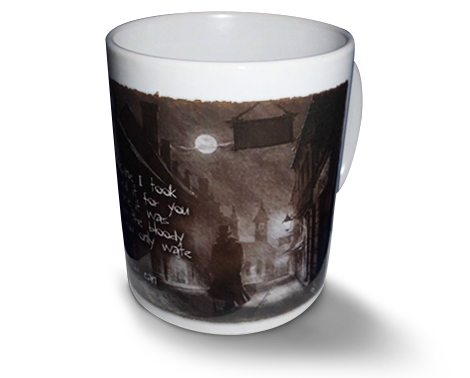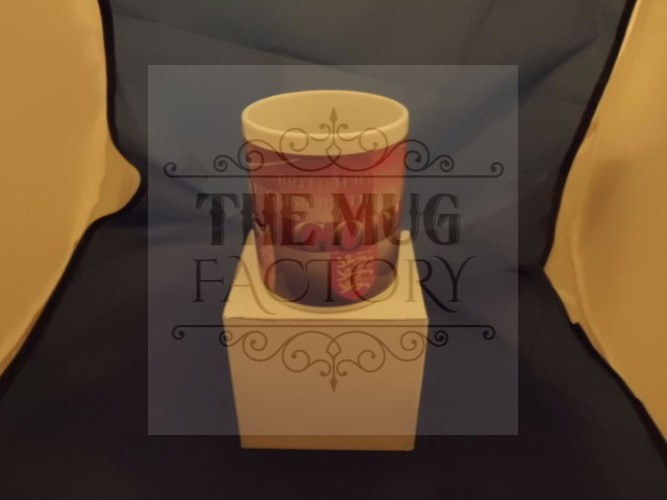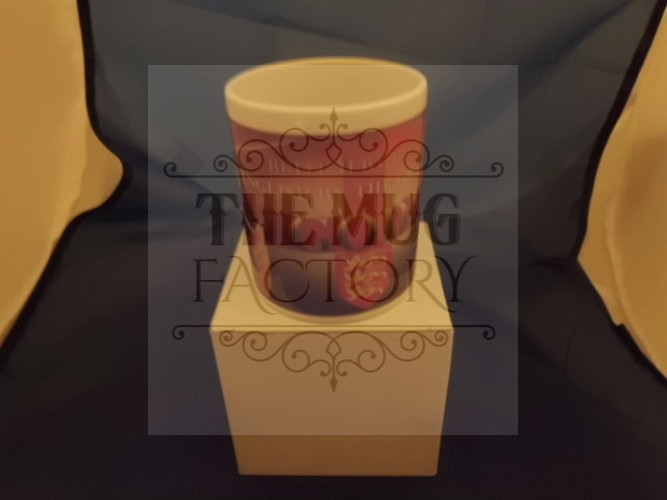British by birth english by the grace of god military mug
British by birth english by the grace of god 11oz
Roughly translated, 'British by birth, English by the grace of God' very roughly translates as 'Britannicus natu, Albionicus per venia de deus'.
With St George struggling to catch the imagination of the English in the way that St Patrick has with the Irish, is it time to consider a different Patron Saint of England?
St George is the patron saint of England but he hasn't always had that title. Originally the position was held by St Edmund who gave his name to the Suffolk town of Bury St Edmunds. With St George struggling to catch the imagination of the English in the way that St Patrick has with the Irish, is it time to consider putting St Edmund back where he once was
BBC Radio Suffolk breakfast presenter Mark Murphy certainly is and has launched a campaign to raise the profile of St Edmund.
Mark says "I don't have anything against St George, in fact I still have some cross of St George bunting left over from the World Cup hanging up in my back garden but let's be honest he hasn't really caught on has he? The Irish have taken St Patrick to their hearts and have a massive party on his special day and no matter how hard we try St George seems to leave many people cold". Mark adds "I've been interested in the Story of St Edmund for some time and thought it was about time his profile was raised again and anyway I quite fancy a bank holiday on November 20th, I could get my Christmas shopping done early." The campaign has received the backing of the MP for Bury St Edmunds David Ruffley and the East Anglian Daily Times newspaper. If you'd like to join the campaign or to disagree with it then why not add your vote and comments below. But before you do, you can read a little more about St Edmund.
So who was St Edmund
Unlike many medieval saints, St Edmund was a real person but not too much is known factually about him. What we do know is that he was a king who ruled the Anglo Saxon realm of East Anglia between 855AD and 869 AD. He even had Silver pennies struck in his honour.
Carving of wolf and St Edmund's head
What happened to him
Several places claim to be the location of Saint Edmund's death. Hoxne near Diss is the one favoured by most scholars. The story goes that he was captured by Danish or Viking raiders after hiding underneath Goldbrook bridge. The reflection of his golden spurs glinting in the water revealed his hiding place to a newly wed couple. He was then captured and tied to an oak tree. Legend has it that on refusing to renounce his faith he was put to death by a volley of arrows. He was said to have so many arrows in him that he "bristled like a hedgehog". His head was then cut off and thrown into the woods. It was then allegedly whisked away by a wolf. Later as his followers were searching for his remains they heard a cry of "here, here, here" and traced the voice to the wolf who was protecting the severed head. On reuniting the head with its body the two are said to have miraculously joined together leaving only a faint red mark...the sign of a true saint. Many miracles were subsequently attributed to the power of St Edmund and he was patron saint of England until the dragon slaying George was awarded the title some time later.
Historians now think he was killed much closer to Bury St Edmunds, probably near the village of Bradfield St Clare but even today brides on their way to church shy away from the Goldbrook bridge in case it brings them bad luck. The truth is no-one really knows for sure.
Where are the remains of St Edmund buried?
It's been reported that some time after his death his body was interred at a monastery in the small royal town of Bedericesworth. The shrine attracted pilgrims and the monastery grew ever more important. People soon started to call the town "Saint Edmund's bury" now known as Bury St Edmunds. His name though lives on today. St Edmundsbury cathedral and council are named after him. Several schools and churches also bear his name. The shrine was dismantled in 1539 during the Reformation. Some say his remains had already been stolen in the 13th century and sent to France. In the 19th century a packet of bones marked with his name was found in the cathedral of St Sernin in Toulouse. A papal commission decided they were the bones of St Edmund and the pope ordered they should be sent to Westminster Cathedral. They only got as far as Arundel when a dispute broke out and to this day they are believed to be still there in a private chapel.
Supporters
Several local authorities are backing the campaign and some of them are flying the St Edmund flag above their offices: Bury St Edmunds Town Council, Suffolk County Council, Ipswich Borough Council and Hoxne Parish Council.
Rougham Airfield near Bury has decided to rename one of its events in St Edmund's honour. Their summer medieval show will be re-branded as a St Edmund pageant.
The East Anglian Daily Times newspaper.
The Conservative MP for Bury St Edmunds David Ruffley is backing the campaign. He's helping to deliver the petition to the Houses of Commons and to 10, Downing Street in November 2006.
Ipswich Town football club is backing the campaign and flying the flag at Portman Road stadium.
Greene King brewery has backed the appeal and produced a special St Edmund ale.
One Railway is backing the campaign and is naming a train St Edmund.
Local schools have been using the campaign to look at local history.
The Suffolk Tourism Partnership says this is a fabulous idea and is going to help boost visitor numbers to Suffolk.
Crown Nursery in Ufford has found an old St Edmund pippin tree and planted it into its heritage garden. They are hoping to encourage people to buy and plant them again.
The Real Sausage Company in Trimley St Martin has produced a St Edmund sausage (and, yes, it was his head that was cut off!).
Edelweiss florist in Stowmarket has produced a St Edmund bouquet.
The Mayor of Southwold backs the campaign and on St Edmunds day will be following the ancient tradition of handing out St Edmund sticky buns.
Bury St Edmunds tourist information centre has agreed to run a series of BBC Radio Suffolk St Edmund walks.
A St Edmund service is taking place at St Edmundsbury cathedral on Sunday 19th November 2006.
A St Edmund rose is available from Cants in Colchester.











